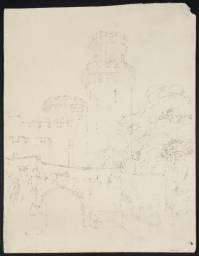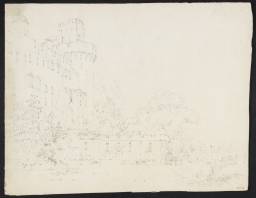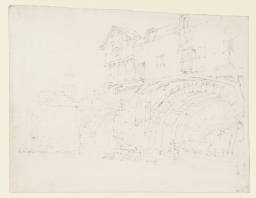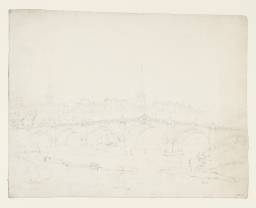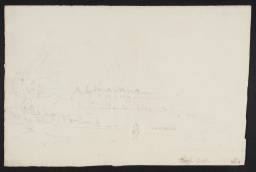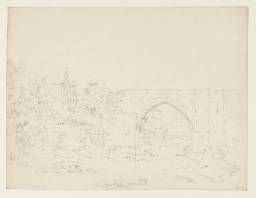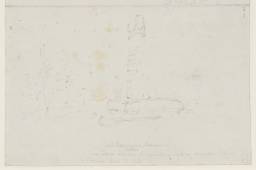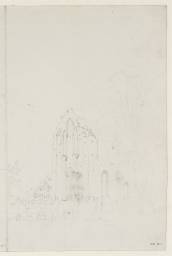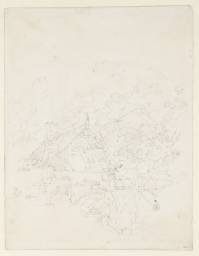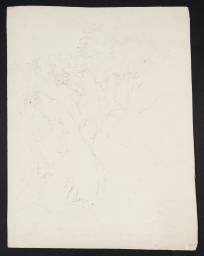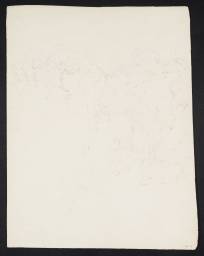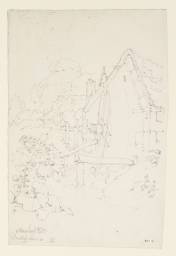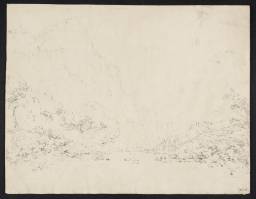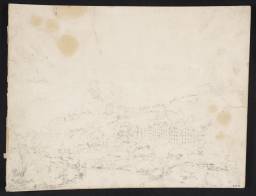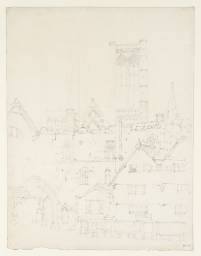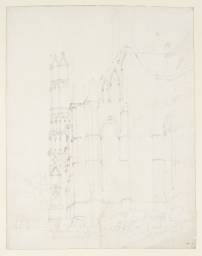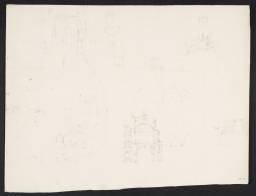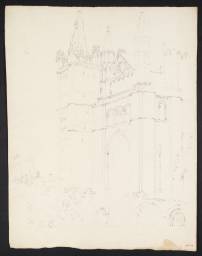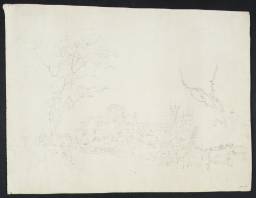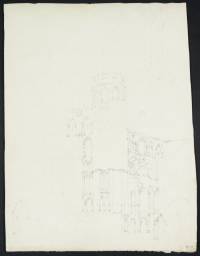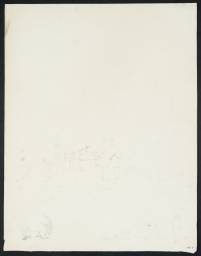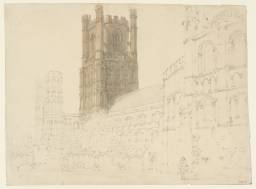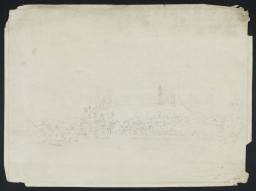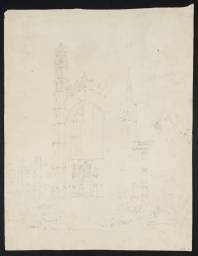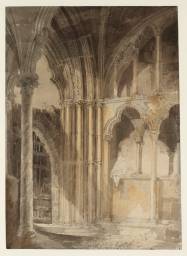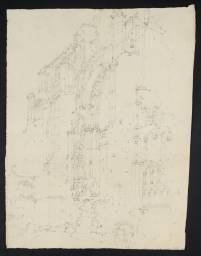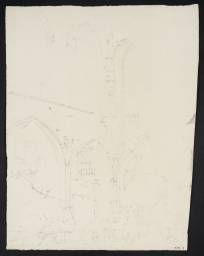Turner Bequest XXI A, B, D–Q, T–Z, XXII A, Aa, E–M, P–S, XXIII C, D, b, c, e, XXVII A, C, XXVIII N, O, CCCLXXVII 11–13
References
For the circumstances of this tour see introductory note to the Matlock sketchbook (Tate; Turner Bequest XIX). Finberg catalogued the majority of the series in two lists (Turner Bequest XXI, XXII), but some other subjects have been drawn from elsewhere in his Inventory. With a few exceptions the sheets, which Peter Bower identifies as Large Post Quarto (see Tate D00330; Turner Bequest XXI D), may have come from sketchbooks, as Bower suggests, and there is some evidence of such a book (see Tate D00341; Turner Bequest XXI N). However, the sheets vary considerably in size and format, and many bear evidence of having been cut or torn from a larger sheet, sometimes apparently along a straight edge. Some escaped form Turner’s studio and are now in scattered collections; for example the two sheets of pencil studies showing old buildings in Chester, in the Fogg Museum, Cambridge, Massachusetts.1
This may therefore be the first time that Turner decided to work on loose sheets while on tour. He was to develop the practice in North Wales (see the large Turner Bequest Snowdonia subjects of 1799), Scotland (see the ‘Scottish Pencils’, Tate; Turner Bequest LVIII) and, in the 1820s and 1830s, on the Continent. A feature of these Midland Tour drawings is Turner’s use of a straight-edge for the principal architectural masses. But they are also remarkable for the skill with which he depicts intricate perspectives and gothic detail freehand. Finberg finds many of them tentative or mechanical,2 but in general they are effective, workmanlike studies that fulfil their function, which was simply to provide Turner with the raw material from which he could develop topographical views on his return to London. Some, such as Tate D00352 and D00358 (Turner Bequest XXI Y, XXII E), have added washes of watercolour, and these show how accomplished his use of that medium had become as a means of recording effects on the spot.
The stylistic similarity of these drawings with the work of Thomas Girtin (1775–1802) is evident, as in other work of this year (see elsewhere in the present catalogue), and Finberg had difficulty determining which of the two draughtsmen was responsible for several of the sheets in this group. He recorded his doubts both by allocating some to a separate section of his Inventory (Tate; Turner Bequest CCCLXXVII), which he assigned en bloc to Girtin,3 and later by annotating the published entries with corrections in his interleaved copy of the Inventory (Tate). He also recorded in MS notes the opinion of C.F. Bell on this point. Bell was happy to restore many of the doubtful sheets to Turner, and his opinion usually coincides with that of the present cataloguer. For a discussion of the problem in relation to work done by Turner and Girtin for Dr Thomas Monro (1759–1833), see the introductory note to the section on the London and Home Counties drawings of 1793–5.4
A feature of several of the drawings in this group is Turner’s concern to record not only great architectural monuments like the cathedrals at Lincoln and Ely but the heterogeneous buildings that surround them. Several sheets concentrate on these almost exclusively, demonstrating clearly what had already been apparent in his work at Malmesbury (see the Bristol and Malmesbury sketchbook, Tate; Turner Bequest VI) and elsewhere, that he had an eye for the Picturesque as an adjunct to the Sublime, and as an index of the reality of the world. The various drawings of watermills that he made on his Midland tour testify to the same interest.
In 1830 Turner made a second tour of the Midland counties, gathering material for an important project, the Picturesque Beauties of England and Wales. Despite that more recent experience, he nevertheless found his early drawings of value in executing the series; see for instance the drawing of Lichfield Cathedral (D00365; Turner Bequest XXII L).
If Turner followed the routes suggested in the notes he drew up in the Matlock sketchbook (Tate D00208–D00211 (Turner Bequest XIX 2, 3, 4, 5), the itinerary covering the drawings in this section would have been as follows: Warwick, Kenilworth, Lichfield, Buildwas Abbey, Whittington, Shrewsbury, Chirk, Llangollen, Valle Crucis Abbey, Marford, Chester, Matlock, Newark, Lincoln, Crowland Abbey, Peterborough, Ely, Cambridge.
See James Hamilton, Turner’s Britain, exhibition catalogue, Gas Hall, Birmingham Museums & Art Gallery 2003, p.38.
A.J. Finberg, A Complete Inventory of the Drawings of the Turner Bequest, London 1909, vol.II, pp.1238–41.
How to cite
Andrew Wilton, ‘Drawings Made on the Midland Tour 1794’, subset, April 2012, in David Blayney Brown (ed.), J.M.W. Turner: Sketchbooks, Drawings and Watercolours, Tate Research Publication, December 2012, https://www

